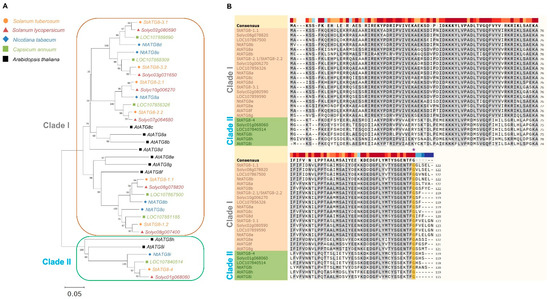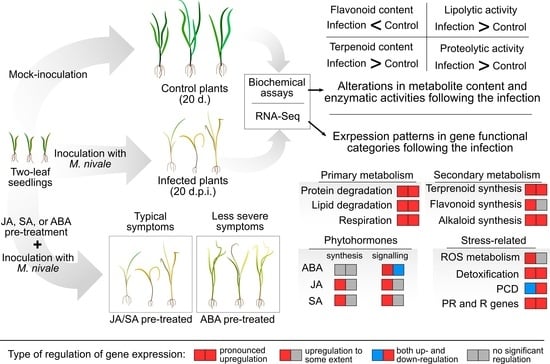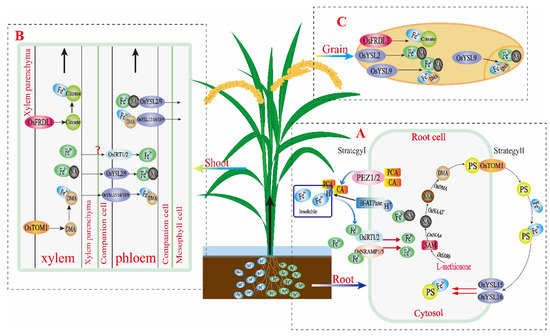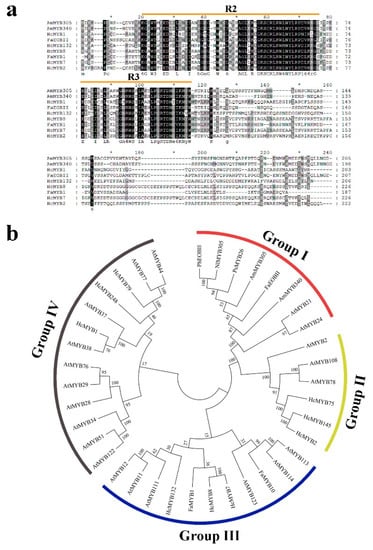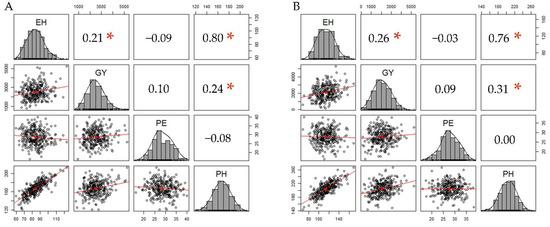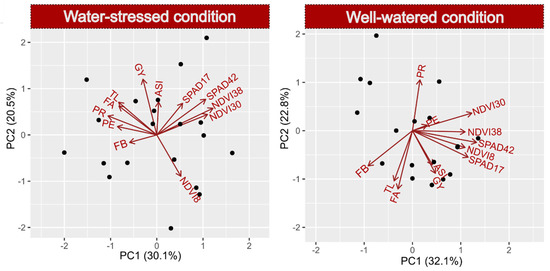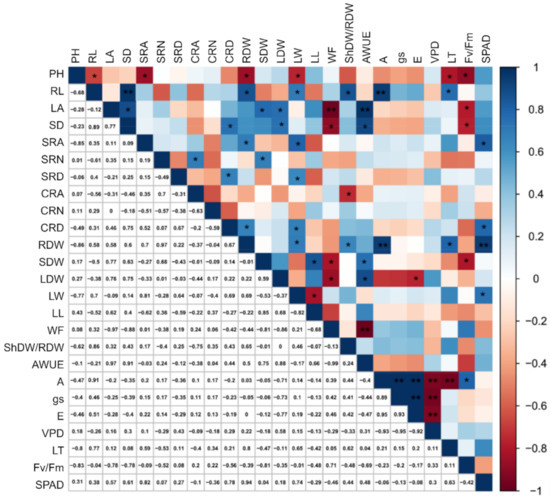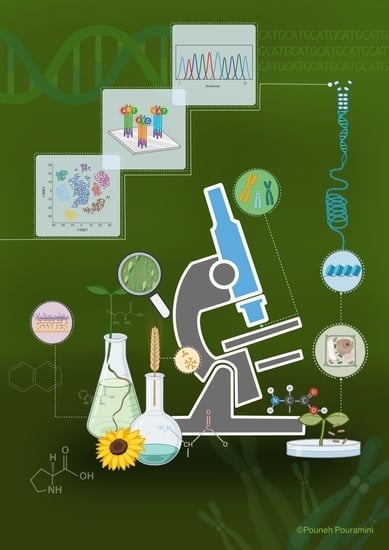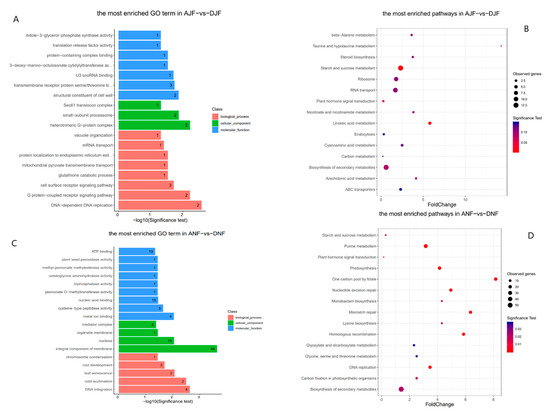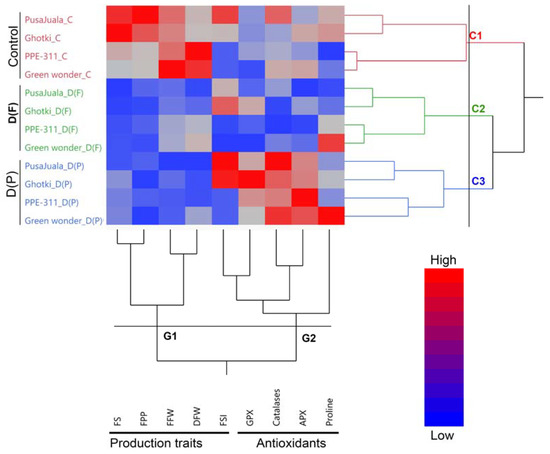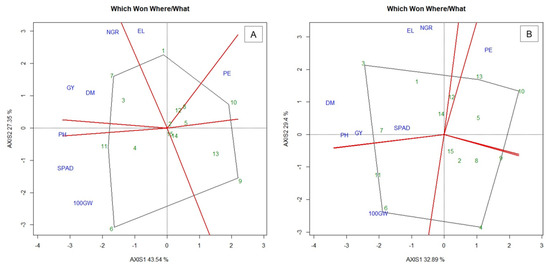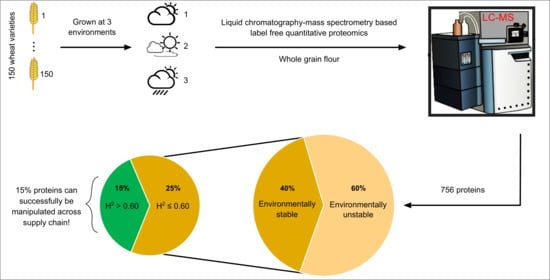OMICs, Epigenetics and Genome Editing Techniques for Food and Nutritional Security
Share This Topical Collection
Editors
 Dr. Antônio Teixeira do Amaral Junior
Dr. Antônio Teixeira do Amaral Junior
 Dr. Antônio Teixeira do Amaral Junior
Dr. Antônio Teixeira do Amaral Junior
E-Mail
Website
Collection Editor
Laboratory of Genetics and Breeding (LMGV), North Fluminense State University (UENF), Av. Alberto Lamego, 2.000 – Parque Califórnia Campos dos Goytacazes CEP: 28013-602, RJ, Brazil
Interests: breeding science; proteomic; hybrid seed production; quantitative genetics; marker assisted selection
Topical Collection Information
Dear Colleagues,
The adequate supply of food providing calories and nutrients is essential for human survival. It has been estimated that approximately 800 million human population around the globe is facing acute shortage of food, around 2 billion are facing nutrient deficiency. Plant breeding and other agricultural technologies have contributed considerably to hunger reduction during the last few decades. However, crop improvement through the conventional breeding approaches is time-consuming and lacks in ability to deal with the global food requirements. Therefore, current research efforts in crop improvement target the use of OMIC technologies (e.g., genomics, phenomics, proteomics, etc.) to improve the efficiency and accuracy of conventional breeding. In fact, the amount of crop improvement programs that use the principles of OMIC-assisted breeding have increased considerably in recent years. Moreover, the exploitation of the advantages of the high-throughput techniques could have a positive impact on genetic improvement of crops based on OMIC-assisted breeding.
Therefore, in this Collection, we will publish reviews and original research papers that advance our understanding of novel plant breeding techniques that can help to accelerate the breeding programs with high efficiency and reliability. The scientific information on OMICs, Epigenetics and Genome Editing Techniques can help to unearth the underlying biological mechanism in plants, which is key to ensure food and nutritional security worldwide.
Dr. Freddy Mora-Poblete
Dr. Viktor Korzun
Dr. Antônio Teixeira do Amaral Junior
Collection Editors
Manuscript Submission Information
Manuscripts should be submitted online at www.mdpi.com by registering and logging in to this website. Once you are registered, click here to go to the submission form. Manuscripts can be submitted until the deadline. All submissions that pass pre-check are peer-reviewed. Accepted papers will be published continuously in the journal (as soon as accepted) and will be listed together on the collection website. Research articles, review articles as well as short communications are invited. For planned papers, a title and short abstract (about 100 words) can be sent to the Editorial Office for announcement on this website.
Submitted manuscripts should not have been published previously, nor be under consideration for publication elsewhere (except conference proceedings papers). All manuscripts are thoroughly refereed through a single-blind peer-review process. A guide for authors and other relevant information for submission of manuscripts is available on the Instructions for Authors page. Plants is an international peer-reviewed open access semimonthly journal published by MDPI.
Please visit the Instructions for Authors page before submitting a manuscript.
The Article Processing Charge (APC) for publication in this open access journal is 2700 CHF (Swiss Francs).
Submitted papers should be well formatted and use good English. Authors may use MDPI's
English editing service prior to publication or during author revisions.
Keywords
- Multi-OMICs approaches (genomics, phenomics, proteomics, etc.)
- High-throughput techniques
- Grain Quality Improvement
- Hybrid Seed Production
- QTL mapping and GWAS
- Genome Sequencing
- Functional Genomics
- Genome Editing
- Gene Regulations
- Epigenetic Modifications
- Food Security
- Crop Improvement
- Speed Breeding
- Genomic Selection
- Zero Hunger
- Regulatory Framework
Published Papers (15 papers)
Open AccessArticle
Identification and Expression Analysis of the Solanum tuberosum StATG8 Family Associated with the WRKY Transcription Factor
by
Injeong Song, Suji Hong and Sung Un Huh
Cited by 3 | Viewed by 1384
Abstract
Autophagy is an evolutionarily well-conserved cellular catabolic pathway in eukaryotic cells and plays an important role in cellular processes. Autophagy is regulated by autophagy-associated (ATG) proteins. Among these ATG proteins, the ubiquitin-like protein ATG8/LC3 is essential for autophagosome formation and function. In this
[...] Read more.
Autophagy is an evolutionarily well-conserved cellular catabolic pathway in eukaryotic cells and plays an important role in cellular processes. Autophagy is regulated by autophagy-associated (ATG) proteins. Among these ATG proteins, the ubiquitin-like protein ATG8/LC3 is essential for autophagosome formation and function. In this study, the potato
StATG8 family showed clade I and clade II with significantly different sequences. Expression of the
StATG8 family was also increased in senescence. Interestingly, the expression of the
StATG8 and other core
StATG genes decreased in potato tubers as the tubers matured. The
StATG8 family also responded to a variety of stresses such as heat, wounding, salicylic acid, and salt stress. We also found that some Arabidopsis WRKY transcription factors interacted with the StATG8 protein
in planta. Based on group II-a WRKY, StATG8-WRKY interaction is independent of the ATG8 interacting motif (AIM) or LC3 interacting region (LIR) motif. This study showed that the StATG8 family had diverse functions in tuber maturation and multiple stress responses in potatoes. Additionally, StATG8 may have an unrelated autophagy function in the nucleus with the WRKY transcription factor.
Full article
►▼
Show Figures
Open AccessArticle
Transcriptomic and Physiological Response of Durum Wheat Grain to Short-Term Heat Stress during Early Grain Filling
by
Anita Arenas-M, Francisca M. Castillo, Diego Godoy, Javier Canales and Daniel F. Calderini
Cited by 11 | Viewed by 3343
Abstract
In a changing climate, extreme weather events such as heatwaves will be more frequent and could affect grain weight and the quality of crops such as wheat, one of the most significant crops in terms of global food security. In this work, we
[...] Read more.
In a changing climate, extreme weather events such as heatwaves will be more frequent and could affect grain weight and the quality of crops such as wheat, one of the most significant crops in terms of global food security. In this work, we characterized the response of
Triticum turgidum L. spp.
durum wheat to short-term heat stress (HS) treatment at transcriptomic and physiological levels during early grain filling in glasshouse experiments. We found a significant reduction in grain weight (23.9%) and grain dimensions from HS treatment. Grain quality was also affected, showing a decrease in starch content (20.8%), in addition to increments in grain protein levels (14.6%), with respect to the control condition. Moreover, RNA-seq analysis of durum wheat grains allowed us to identify 1590 differentially expressed genes related to photosynthesis, response to heat, and carbohydrate metabolic process. A gene regulatory network analysis of HS-responsive genes uncovered novel transcription factors (TFs) controlling the expression of genes involved in abiotic stress response and grain quality, such as a member of the DOF family predicted to regulate glycogen and starch biosynthetic processes in response to HS in grains. In summary, our results provide new insights into the extensive transcriptome reprogramming that occurs during short-term HS in durum wheat grains.
Full article
►▼
Show Figures
Open AccessArticle
Alterations in the Transcriptome of Rye Plants following the Microdochium nivale Infection: Identification of Resistance/Susceptibility-Related Reactions Based on RNA-Seq Analysis
by
Ivan Tsers, Azat Meshcherov, Olga Gogoleva, Olga Petrova, Natalia Gogoleva, Mira Ponomareva, Yuri Gogolev, Viktor Korzun and Vladimir Gorshkov
Cited by 6 | Viewed by 2851
Abstract
Microdochium nivale is a progressive and devastating phytopathogen that causes different types of cereal crop and grass diseases that are poorly characterized at the molecular level. Although rye (
Secale cereale L.) is one of the most resistant crops to most of the
[...] Read more.
Microdochium nivale is a progressive and devastating phytopathogen that causes different types of cereal crop and grass diseases that are poorly characterized at the molecular level. Although rye (
Secale cereale L.) is one of the most resistant crops to most of the phytopathogens, it is severely damaged by
M. nivale. The recent high-quality chromosome-scale assembly of rye genome has improved whole-genome studies of this crop. In the present work, the first transcriptome study of the
M. nivale-infected crop plant (rye) with the detailed functional gene classification was carried out, along with the physiological verification of the RNA-Seq data. The results revealed plant reactions that contributed to their resistance or susceptibility to
M. nivale. Phytohormone abscisic acid was shown to promote plant tolerance to
M. nivale. Flavonoids were proposed to contribute to plant resistance to this pathogen. The upregulation of plant lipase encoding genes and the induction of lipase activity in
M. nivale-infected plants revealed in our study were presumed to play an important role in plant susceptibility to the studied phytopathogen. Our work disclosed important aspects of plant-
M. nivale interactions, outlined the directions for future studies on poorly characterized plant diseases caused by this phytopathogen, and provided new opportunities to improve cereals breeding and food security strategies.
Full article
►▼
Show Figures
Open AccessReview
Research and Progress on the Mechanism of Iron Transfer and Accumulation in Rice Grains
by
Qian Wang, Mengjie Chen, Qianyi Hao, Hanlai Zeng and Ying He
Cited by 7 | Viewed by 2667
Abstract
Iron (Fe) is one of the most important micronutrients for organisms. Currently, Fe deficiency is a growing nutritional problem and is becoming a serious threat to human health worldwide. A method that could help alleviate this “hidden hunger” is increasing the bioavailable Fe
[...] Read more.
Iron (Fe) is one of the most important micronutrients for organisms. Currently, Fe deficiency is a growing nutritional problem and is becoming a serious threat to human health worldwide. A method that could help alleviate this “hidden hunger” is increasing the bioavailable Fe concentrations in edible tissues of major food crops. Therefore, understanding the molecular mechanisms of Fe accumulation in different crop tissues will help to develop crops with higher Fe nutritional values. Biofortification significantly increases the concentration of Fe in crops. This paper considers the important food crop of rice (
Oryza sativa L.) as an example and highlights recent research advances on the molecular mechanisms of Fe uptake and allogeneic uptake in different tissues of rice. In addition, different approaches to the biofortification of Fe nutrition in rice and their outcomes are described and discussed. To address the problems that occur during the development and application of improving nutritional Fe in rice, technical strategies and long-term solutions are also proposed as a reference for the future improvement of staple food nutrition with micronutrients.
Full article
►▼
Show Figures
Open AccessArticle
Functional Characterization of Hedychium coronarium J. Koenig MYB132 Confers the Potential Role in Floral Aroma Synthesis
by
Farhat Abbas, Yanguo Ke, Yiwei Zhou, Rangcai Yu, Muhammad Imran, Sikandar Amanullah, Dylan O’Neill Rothenberg, Qin Wang, Lan Wang and Yanping Fan
Cited by 14 | Viewed by 2542
Abstract
The R2R3-MYB transcription factors (TFs) play several key roles in numerous plant biological processes.
Hedychium coronarium is an important ornamental plant well-known for its elegant flower shape and abundant aroma type. The floral aroma of
H.
coronarium is due to the presence
[...] Read more.
The R2R3-MYB transcription factors (TFs) play several key roles in numerous plant biological processes.
Hedychium coronarium is an important ornamental plant well-known for its elegant flower shape and abundant aroma type. The floral aroma of
H.
coronarium is due to the presence of a large amount of terpenes and benzenoids. However, less is known about the role of R2R3-MYB TFs in the regulatory mechanism of floral aroma production in this breed. Herein, we isolate and functionally characterize the R2R3-MYB TF HcMYB132, which is potentially involved in regulating floral aroma synthesis. Sequence alignment analysis revealed that it includes a nuclear localization signal NLS(s) and a 2R, 3R motif signature in the sequences. A subcellular localization assay revealed that HcMYB132 protein localizes to the nucleus. Real-time qPCR assays showed that
HcMYB132 is specifically expressed in flowers and its expression pattern correlates with the emission of floral volatile compounds. In
HcMYB132-silenced flowers, the levels of floral volatile compounds were significantly reduced, and the expression of key structural volatile synthesis genes was downregulated compared to control. Collectively, these results suggest that
HcMYB132 might play a significant role in the regulation of terpenoid biosynthesis in
H. coronarium.
Full article
►▼
Show Figures
Open AccessReview
Omics for the Improvement of Abiotic, Biotic, and Agronomic Traits in Major Cereal Crops: Applications, Challenges, and Prospects
by
Balwinder Kaur, Karansher S. Sandhu, Roop Kamal, Kawalpreet Kaur, Jagmohan Singh, Marion S. Röder and Quddoos H. Muqaddasi
Cited by 37 | Viewed by 8754
Abstract
Omics technologies, namely genomics, transcriptomics, proteomics, metabolomics, and phenomics, are becoming an integral part of virtually every commercial cereal crop breeding program, as they provide substantial dividends per unit time in both pre-breeding and breeding phases. Continuous advances in omics assure time efficiency
[...] Read more.
Omics technologies, namely genomics, transcriptomics, proteomics, metabolomics, and phenomics, are becoming an integral part of virtually every commercial cereal crop breeding program, as they provide substantial dividends per unit time in both pre-breeding and breeding phases. Continuous advances in omics assure time efficiency and cost benefits to improve cereal crops. This review provides a comprehensive overview of the established omics methods in five major cereals, namely rice, sorghum, maize, barley, and bread wheat. We cover the evolution of technologies in each omics section independently and concentrate on their use to improve economically important agronomic as well as biotic and abiotic stress-related traits. Advancements in the (1) identification, mapping, and sequencing of molecular/structural variants; (2) high-density transcriptomics data to study gene expression patterns; (3) global and targeted proteome profiling to study protein structure and interaction; (4) metabolomic profiling to quantify organ-level, small-density metabolites, and their composition; and (5) high-resolution, high-throughput, image-based phenomics approaches are surveyed in this review.
Full article
►▼
Show Figures
Open AccessArticle
Regional Heritability Mapping of Quantitative Trait Loci Controlling Traits Related to Growth and Productivity in Popcorn (Zea mays L.)
by
Gabrielle Sousa Mafra, Janeo Eustáquio de Almeida Filho, Antônio Teixeira do Amaral Junior, Carlos Maldonado, Samuel Henrique Kamphorst, Valter Jário de Lima, Divino Rosa dos Santos Junior, Jhean Torres Leite, Pedro Henrique Araujo Diniz Santos, Talles de Oliveira Santos, Rosimeire Barboza Bispo, Uéliton Alves de Oliveira, Vitor Batista Pinto, Alexandre Pio Viana, Caio Cezar Guedes Correa, Sunny Ahmar and Freddy Mora-Poblete
Cited by 3 | Viewed by 2319
Abstract
The method of regional heritability mapping (RHM) has become an important tool in the identification of quantitative trait loci (QTLs) controlling traits of interest in plants. Here, RHM was first applied in a breeding population of popcorn, to identify the QTLs and candidate
[...] Read more.
The method of regional heritability mapping (RHM) has become an important tool in the identification of quantitative trait loci (QTLs) controlling traits of interest in plants. Here, RHM was first applied in a breeding population of popcorn, to identify the QTLs and candidate genes involved in grain yield, plant height, kernel popping expansion, and first ear height, as well as determining the heritability of each significant genomic region. The study population consisted of 98 S1 families derived from the 9th recurrent selection cycle (C-9) of the open-pollinated variety UENF-14, which were genetically evaluated in two environments (ENV1 and ENV2). Seventeen and five genomic regions were mapped by the RHM method in ENV1 and ENV2, respectively. Subsequent genome-wide analysis based on the reference genome B73 revealed associations with forty-six candidate genes within these genomic regions, some of them are considered to be biologically important due to the proteins that they encode. The results obtained by the RHM method have the potential to contribute to knowledge on the genetic architecture of the growth and yield traits of popcorn, which might be used for marker-assisted selection in breeding programs.
Full article
►▼
Show Figures
Open AccessArticle
Supporting Physiological Trait for Indirect Selection for Grain Yield in Drought-Stressed Popcorn
by
Samuel Henrique Kamphorst, Gabriel Moreno Bernardo Gonçalves, Antônio Teixeira do Amaral Júnior, Valter Jário de Lima, Kátia Fabiane Medeiros Schmitt, Jhean Torres Leite, Valdinei Cruz Azeredo, Letícia Peixoto Gomes, José Gabriel de Souza Silva, Carolina Macedo Carvalho, Gabrielle Sousa Mafra, Rogério Figueiredo Daher and Eliemar Campostrini
Cited by 7 | Viewed by 2056
Abstract
The identification of traits associated with drought tolerance in popcorn is a contribution to support selection of superior plants under soil water deficit. The objective of this study was to choose morphological traits and the leaf greenness index, measured on different dates, to
[...] Read more.
The identification of traits associated with drought tolerance in popcorn is a contribution to support selection of superior plants under soil water deficit. The objective of this study was to choose morphological traits and the leaf greenness index, measured on different dates, to estimate grain yield (GY) and popping expansion (PE), evaluated in a set of 20 popcorn lines with different genealogies, estimated by multiple regression models. The variables were divided into three groups: morpho-agronomic traits—100-grain weight (GW), prolificacy (PR), tassel length (TL), number of tassel branches, anthesis-silking interval, leaf angle (FA) and leaf rolling (FB); variables related to the intensity of leaf greenness during the grain-filling period, at the leaf level, measured by a portable chlorophyll meter (SPAD) and at the canopy level, calculated as the normalized difference vegetation index (NDVI). The inbred lines were cultivated under two water conditions: well-watered (WW), maintained at field capacity, and water stress (WS), for which irrigation was stopped before male flowering. The traits GY (55%) and PE (28%) were most affected by water restriction. Among the morpho-agronomic traits, GW and PR were markedly reduced (>10%). Under dry conditions, the FA in relation to the plant stalk tended to be wider, the FB curvature greater and leaf senescence accelerated (>15% at 22 days after male flowering). The use of multiple regression for the selection of predictive traits proved to be a useful tool for the identification of groups of adequate traits to efficiently predict the economically most important features of popcorn (GY and PE). The SPAD index measured 17 days after male flowering proved useful to select indirectly for GY, while, among the morphological traits, TL stood out for the same purpose. Of all traits, PR was most strongly related with PE under WS, indicating its use in breeding programs. The exploitation of these traits by indirect selection is expected to induce increments in GY and PE.
Full article
►▼
Show Figures
Open AccessArticle
Water Use Efficiency in Popcorn (Zea mays L. var. everta): Which Physiological Traits Would Be Useful for Breeding?
by
Jhean Torres Leite, Antonio Teixeira do Amaral Junior, Samuel Henrique Kamphorst, Valter Jário de Lima, Divino Rosa dos Santos Junior, Kátia Fabiane Mereiros Schmitt, Yure Pequeno de Souza, Talles de Oliveira Santos, Rosimeire Barboza Bispo, Gabrielle Sousa Mafra, Eliemar Campostrini and Weverton Pereira Rodrigues
Cited by 8 | Viewed by 2815
Abstract
To ensure genetic gains in popcorn breeding programs carried out under drought conditions knowledge about the response of morphophysiological traits of plants to water stress for the selection of key traits is required. Therefore, the objective was to evaluate popcorn inbred lines with
[...] Read more.
To ensure genetic gains in popcorn breeding programs carried out under drought conditions knowledge about the response of morphophysiological traits of plants to water stress for the selection of key traits is required. Therefore, the objective was to evaluate popcorn inbred lines with agronomically efficient (P2 and P3) and inefficient (L61 and L63) water use and two hybrids (P2xL61 and P3xL63) derived from these contrasting parents, cultivated under two water regimes (WW watered—WW; and water-stressed—WS) in a greenhouse, replicated five times, where each experimental unit consisted of one plant in a PVC tube. Irrigation was applied until stage V6 and suspended thereafter. Individual and combined analyses of variance were performed and the genotypic correlations and relative heteroses estimated. The water use efficient inbred lines were superior in root length (RL), root dry weight (RDW), and net CO
2 assimilation rate (A), which were the characteristics that differentiated the studied genotypes most clearly. High heterosis estimates were observed for RL, SDW, leaf width (LW), leaf midrib length (LL), and agronomic water use efficiency (AWUE). The existence of a synergistic association between root angle and length for the characteristics A, stomatal conductance (gs), and chlorophyll concentration (SPAD index) proved most important for the identification and phenotyping of superior genotypes. Based on the study of these characteristics, the higher AWUE of the previously selected inbred lines could be explained. The results reinforced the importance of root physiological and morphological traits to explain AWUE and the possibility of advances by exploiting heterosis, given the morphophysiological superiority of hybrids in relation to parents.
Full article
►▼
Show Figures
Open AccessReview
OMICs, Epigenetics, and Genome Editing Techniques for Food and Nutritional Security
by
Yuri V. Gogolev, Sunny Ahmar, Bala Ani Akpinar, Hikmet Budak, Alexey S. Kiryushkin, Vladimir Y. Gorshkov, Goetz Hensel, Kirill N. Demchenko, Igor Kovalchuk, Freddy Mora-Poblete, Tugdem Muslu, Ivan D. Tsers, Narendra Singh Yadav and Viktor Korzun
Cited by 14 | Viewed by 7482
Abstract
The incredible success of crop breeding and agricultural innovation in the last century greatly contributed to the Green Revolution, which significantly increased yields and ensures food security, despite the population explosion. However, new challenges such as rapid climate change, deteriorating soil, and the
[...] Read more.
The incredible success of crop breeding and agricultural innovation in the last century greatly contributed to the Green Revolution, which significantly increased yields and ensures food security, despite the population explosion. However, new challenges such as rapid climate change, deteriorating soil, and the accumulation of pollutants require much faster responses and more effective solutions that cannot be achieved through traditional breeding. Further prospects for increasing the efficiency of agriculture are undoubtedly associated with the inclusion in the breeding strategy of new knowledge obtained using high-throughput technologies and new tools in the future to ensure the design of new plant genomes and predict the desired phenotype. This article provides an overview of the current state of research in these areas, as well as the study of soil and plant microbiomes, and the prospective use of their potential in a new field of microbiome engineering. In terms of genomic and phenomic predictions, we also propose an integrated approach that combines high-density genotyping and high-throughput phenotyping techniques, which can improve the prediction accuracy of quantitative traits in crop species.
Full article
►▼
Show Figures
Open AccessArticle
Genome Wide MeDIP-Seq Profiling of Wild and Cultivated Olives Trees Suggests DNA Methylation Fingerprint on the Sensory Quality of Olive Oil
by
Oussama Badad, Naoufal Lakhssassi, Nabil Zaid, Abdelhalim El Baze, Younes Zaid, Jonas Meksem, David A Lightfoot, Huseyin Tombuloglu, El Houcine Zaid, Turgay Unver and Khalid Meksem
Cited by 6 | Viewed by 3497
Abstract
Secondary metabolites are particularly important to humans due to their pharmaceutical properties. Moreover, secondary metabolites are key compounds in climate change adaptation in long-living trees. Recently, it has been described that the domestication of
Olea subspecies had no major selection signature on coding
[...] Read more.
Secondary metabolites are particularly important to humans due to their pharmaceutical properties. Moreover, secondary metabolites are key compounds in climate change adaptation in long-living trees. Recently, it has been described that the domestication of
Olea subspecies had no major selection signature on coding variants and was mainly related to changes in gene expression. In addition, the phenotypic plasticity in
Olea subspecies was linked to the activation of transposable elements in the genes neighboring. Here, we investigated the imprint of DNA methylation in the unassigned fraction of the phenotypic plasticity of the
Olea subspecies, using methylated DNA immuno-precipitation sequencing (MeDIP-seq) for a high-resolution genome-wide DNA methylation profiling of leaves and fruits during fruit development in wild and cultivated olives from Turkey. Notably, the methylation profiling showed a differential DNA methylation in secondary metabolism responsible for the sensory quality of olive oil. Here, we highlight for the first time the imprint of DNA methylation in modulating the activity of the Linoleate 9S lipoxygenase in the biosynthesis of volatile aromatic compounds. Unprecedently, the current study reveals the methylation status of the olive genome during fruit ripening.
Full article
►▼
Show Figures
Open AccessArticle
Effect of Drought Stress on Capsaicin and Antioxidant Contents in Pepper Genotypes at Reproductive Stage
by
Tahir Mahmood, Rashid Mehmood Rana, Sunny Ahmar, Saima Saeed, Asma Gulzar, Muhammad Azam Khan, Fahad Masoud Wattoo, Xiukang Wang, Ferdinando Branca, Freddy Mora-Poblete, Gabrielle Sousa Mafra and Xionming Du
Cited by 20 | Viewed by 3849
Abstract
Pepper is one of the most important vegetables and spices in the world. Principal pungency is contributed by secondary metabolites called capsaicinoids, mainly synthesized in the placenta of pepper fruit. Various factors, including drought, limit pepper production. Flowering is one of the most
[...] Read more.
Pepper is one of the most important vegetables and spices in the world. Principal pungency is contributed by secondary metabolites called capsaicinoids, mainly synthesized in the placenta of pepper fruit. Various factors, including drought, limit pepper production. Flowering is one of the most sensitive stages affected by drought stress. The current study was conducted to determine the effect of drought on different pepper genotypes at the flowering and pod formation stages. Hot pepper (Pusajuala and Ghotki) and Bell pepper (Green Wonder and PPE-311) genotypes were subjected to drought (35% field capacity) at two different stages (flowering (DF) and pod formation (DP) stage). In comparison, control plants were maintained at 65% field capacity. The data regarding flowering survival rates, antioxidant protein activity, and proline content, were collected. Results indicated that parameters like flower survival percentage, number of fruits per plant, and fruit weight had significant differences among the genotypes in both treatments. A high proline level was observed in Green Wonder at the pod formation stage compared to other genotypes. Capsaicin contents of hot pepper genotypes were affected at the pod formation stage. Antioxidants like GPX were highly active (190 units) in Ghotki at pod formation. Bell pepper genotypes had a high APX activity, highly observed (100 units) in PPE-311 at pod formation, and significantly differ from hot pepper genotypes. In the catalase case, all the genotypes had the highest values in DP compared to control and DF, but Pusajuala (91 units) and Green Wonder (83 units) performed best compared to other genotypes. Overall, the results indicate that drought stress decreased reproductive growth parameters and pungency of pepper fruit as most of the plant energy was consumed in defense molecules (antioxidants). Therefore, water availability at the flowering and pod formation stage is critical to ensure good yield and pepper quality.
Full article
►▼
Show Figures
Open AccessArticle
Phenotyping Latin American Open-Pollinated Varieties of Popcorn for Environments with Low Water Availability
by
Talles de Oliveira Santos, Antônio Teixeira do Amaral Junior, Rosimeire Barboza Bispo, Valter Jário de Lima, Samuel Henrique Kamphorst, Jhean Torres Leite, Divino Rosa dos Santos Júnior, Pedro Henrique Araújo Diniz Santos, Uéliton Alves de Oliveira, Kátia Fabiane Medeiros Schmitt, Eliemar Campostrini, Monique Moreira Moulin, Alexandre Pio Viana, Geraldo de Amaral Gravina, Caio Cezar Guedes Corrêa and Gabriel Moreno Bernardo Gonçalves
Cited by 15 | Viewed by 3025
Abstract
Drought is a common abiotic stress in tropical and subtropical regions that limits the growth and development of agricultural crops, mainly impacting grain yield. Acting through plant breeding is the most viable alternative for obtaining genotypes more tolerant of environments with stress. This
[...] Read more.
Drought is a common abiotic stress in tropical and subtropical regions that limits the growth and development of agricultural crops, mainly impacting grain yield. Acting through plant breeding is the most viable alternative for obtaining genotypes more tolerant of environments with stress. This work aims to select popcorn genotypes for environments with drought and to identify discriminating traits for the evaluation of drought tolerance in popcorn germplasm. Fifteen Latin American populations of popcorn were evaluated in water stress (WS) and well-watered (WW) conditions. The evaluated traits were based in morpho-agronomic, physiological and radicular descriptors. Data were submitted to individual and joint ANOVA and GT Biplot analysis. Variability was detected between populations for all traits in both conditions. The drought caused a reduction of 30.61% and 3.5% in grain yield and popping expansion, respectively. Based in GT biplot analysis, 880POP was the most stable in WS and WW, being indicated as a promising population for cultivation in environments with water limitation. This study is going to allow the establishment of a collection of great importance to maize germplasm and to provide information to facilitate the process of selection in breeding programs focused on drought tolerance.
Full article
►▼
Show Figures
Open AccessArticle
Dissecting Source-Sink Relationship of Subtending Leaf for Yield and Fiber Quality Attributes in Upland Cotton (Gossypium hirsutum L.)
by
Naimatullah Mangi, Mian Faisal Nazir, Xiaoyan Wang, Muhammad Shahid Iqbal, Zareen Sarfraz, Ghulam Hussain Jatoi, Tahir Mahmood, Qifeng Ma and Fan Shuli
Cited by 15 | Viewed by 2902
Abstract
Photosynthesis as a source is a significant contributor to the reproductive sink affecting cotton yield and fiber quality. Moreover, carbon assimilation from subtending leaves adds up a significant proportion to the reproductive sink. Therefore, this study aimed to address the source-sink relationship of
[...] Read more.
Photosynthesis as a source is a significant contributor to the reproductive sink affecting cotton yield and fiber quality. Moreover, carbon assimilation from subtending leaves adds up a significant proportion to the reproductive sink. Therefore, this study aimed to address the source-sink relationship of boll subtending leaf with fiber quality and yield related traits in upland cotton. A core collection of 355 upland cotton accessions was subjected to subtending leaf removal treatment effects across 2 years. The analysis of variance suggested a significant effect range in the source-sink relationship under subtending leaf removal effects at different growth stages. Further insight into the variation was provided by the correlation analysis and principal component analysis. A significant positive correlation between different traits was observed and the multivariate analysis including hierarchical clustering and principal component analysis (PCA) categorised germplasm accessions into three groups on the basis of four subtending leaf removal treatment effects across 2 years. A set of genotypes with the lowest and highest treatment effects has been identified. Selected accessions and the outcome of the current study may provide a basis for a further study to explore the molecular mechanism of source-sink relationship of boll subtending leaf and utilization of breeding programs focused on cotton improvement.
Full article
►▼
Show Figures
Open AccessArticle
Characterization of 150 Wheat Cultivars by LC-MS-Based Label-Free Quantitative Proteomics Unravels Possibilities to Design Wheat Better for Baking Quality and Human Health
by
Muhammad Afzal, Malte Sielaff, Valentina Curella, Manjusha Neerukonda, Khaoula El Hassouni, Detlef Schuppan, Stefan Tenzer and C. Friedrich H. Longin
Cited by 14 | Viewed by 3825
Abstract
Wheat (
Triticum aestivum ssp.
aestivum) contributes to 20% of the human protein supply, delivers essential amino acids and is of fundamental importance for bread and pasta quality. Wheat proteins are also involved in adverse human reactions like celiac disease (CD), wheat
[...] Read more.
Wheat (
Triticum aestivum ssp.
aestivum) contributes to 20% of the human protein supply, delivers essential amino acids and is of fundamental importance for bread and pasta quality. Wheat proteins are also involved in adverse human reactions like celiac disease (CD), wheat allergy (WA) and non-celiac wheat sensitivity (NCWS). Using liquid chromatography-mass spectrometry (LC-MS)-based label-free quantitative (LFQ) proteomics of aqueous flour extracts, we determined 756 proteins across 150 wheat cultivars grown in three environments. However, only 303 proteins were stably expressed across all environments in at least one cultivar and only 89 proteins thereof across all 150 cultivars. This underlines the large influence of environmental conditions on the expression of many proteins. Wheat cultivars varied largely in their protein profile, shown by high coefficients of variation across different cultivars. Heritability (h
2) ranged from 0–1, with 114 proteins having h² > 0.6, including important proteins for baking quality and human health. The expression of these 114 proteins should be amenable to targeted manipulation across the wheat supply chain by varietal choice and breeding for designing healthier wheat with better quality. Further technical development is urgently required to assign functions to identifiable proteins labeled yet uncharacterized in databases and speeding up detection methods to routinely use proteomics in wheat supply chains.
Full article
►▼
Show Figures








